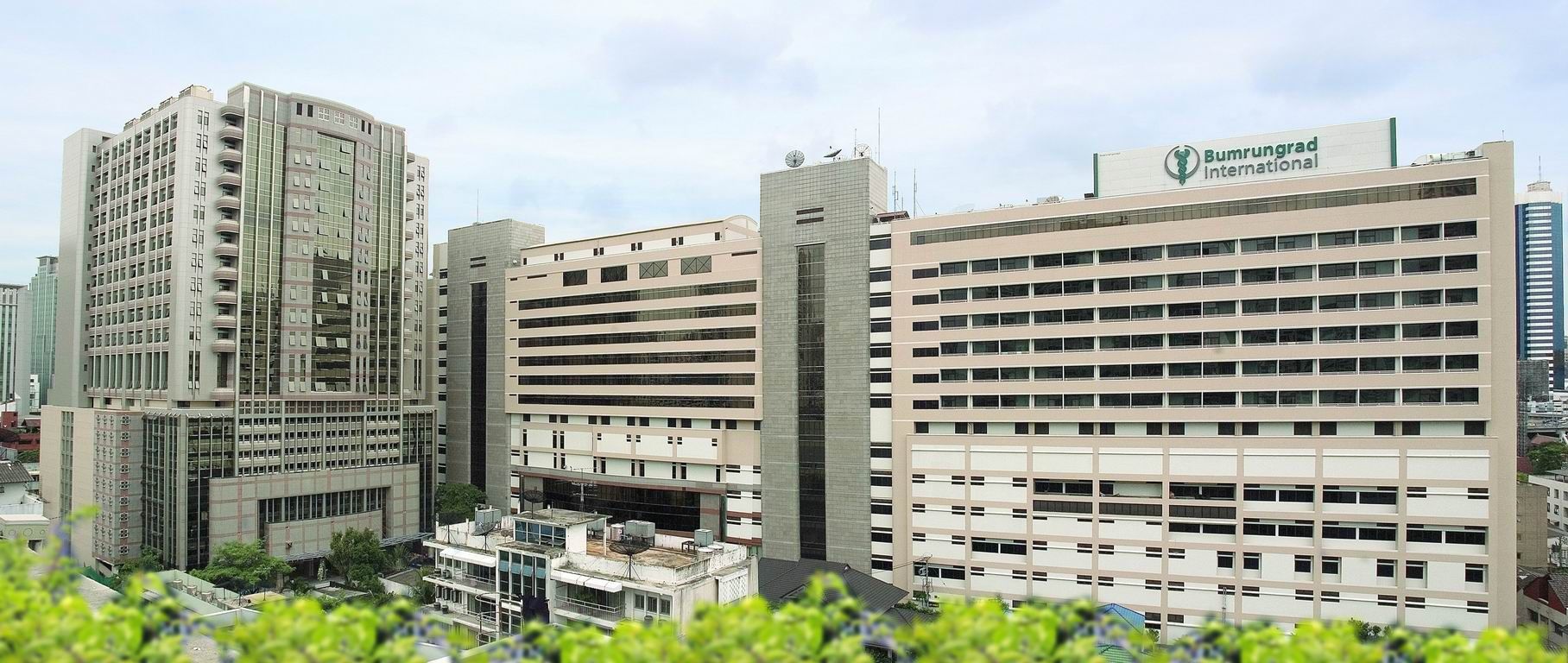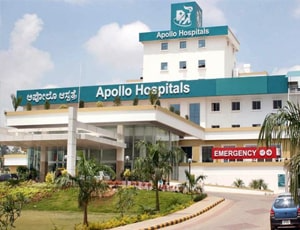Obstetrics and Gynaecology
Laparoscopic hysterectomy Treatment
Hysterectomy
A hysterectomy is a surgical method for the removal of the uterus. A laparoscopic hysterectomy is a minimally invasive surgical procedure for the removal of the uterus. A small incision is made in the belly button and then a tiny camera is inserted. With the help of the camera, the surgeon watches the image on a TV screen and performs the operative procedure.
What is Laparoscopic hysterectomy?
A hysterectomy is a surgical method for the removal of the uterus. A laparoscopic hysterectomy is a minimally invasive surgical procedure for the removal of the uterus. A small incision is made in the belly button and then a tiny camera is inserted. With the help of the camera, the surgeon watches the image on a TV screen and performs the operative procedure. Two or three other tiny incisions are made in the lower abdomen along with an incision made in the belly button. Specialized instruments are inserted and are used for the removal of the uterus.
The main types of hysterectomy are:
Total hysterectomy: During a total hysterectomy, both the womb and cervix are removed. A total hysterectomy is a generally more suitable than a subtotal hysterectomy because by removing the cervix means there's no risk of developing cervical cancer at a later stage.
Subtotal hysterectomy: A subtotal hysterectomy involves the removal of the main body of the womb and leaving the cervix in its place. This procedure isn't performed because if the cervix is left in its place, there's still a risk of cervical cancer developing and regular cervical screening will still be required.
Total hysterectomy with bilateral salpingo-oophorectomy: A total hysterectomy with bilateral salpingo-oophorectomy is a hysterectomy that involves the removal of fallopian tubes and ovaries. The ovaries should only be removed if there’s a significant risk of further problems – for example, if the woman’s family has a history of ovarian cancer.
Radical hysterectomy: A radical hysterectomy is usually carried out for the removal and for the treatment of cancer when other treatments such as chemotherapy and radiotherapy haven’t been effective in the past. During the procedure, the body of the womb and cervix is removed, along with fallopian tubes, a part of vagina, ovaries, lymph glands and fatty tissue.
Hysterectomy Laser Surgery
Hysterectomy laser surgery, also known as a laser assisted hysterectomy or laser surgery for the hysterectomy, is a minimally invasive procedure and involves the removal of the uterus using a laser. It’s a technique involving a combination of traditional surgical procedures with laser device to reshape, coagulate and remove tissue to the precision. Commonly, it is completely laparoscopic and, therefore as in other minimally invasive surgery, offers benefits, but with additional unique benefits based on the laser's capabilities.
Performing a Laparoscopic hysterectomy
Laparoscopic surgery known as keyhole surgery is a preferred treatment method for the removal of organs and surrounding tissues of the reproductive system. In this procedure, a small tube containing a telescope along with a tiny video camera which is inserted in the abdomen through a small incision. The surgeon sees the internal organs with help of camera. Instruments are then inserted through other small incisions in the abdomen or vagina for removal of the womb, cervix and any other parts of the reproductive system. Laparoscopic hysterectomies are generally carried out under general anesthetic.
Pre-Procedure
If One needs to have a hysterectomy, it's important that they are fit and healthy as possible. Good health before the operation reduces the risk of developing complications and speed up the recovery.
The following steps must be followed when one is undergoing Laparoscopic hysterectomy:
- One must take a healthy and balanced diet
- One must exercise regularly
- One must lose weight if they are overweight.
Why Laparoscopic hysterectomy is required?
Laparoscopic hysterectomy is required may be required by the woman because of the following factors:
Heavy periods
A large amount of blood is lost by the woman during their monthly periods. They may also experience pain and stomach cramps. For some women, these symptoms can have a significant impact on their quality of life. Sometimes heavy periods can be caused due to fibroids, but in many of the cases, there are no obvious causes.
In some cases, removing the womb may be the only option of stopping persistent heavy menstrual bleeding when:
Other treatments haven't worked The bleeding has a significant impact on quality of life and it's best for the woman that their periods to stop.
The woman, who no longer wishes to have children
Pelvic inflammatory disease (PID)
PID is a bacterial infection in the female reproductive system. If this infection is detected early, the infection can be treated with antibiotics, however, if it spreads, it can damage the womb and fallopian tubes, resulting in long-term pain. A hysterectomy can be performed to remove the womb and a fallopian tube to those women has severe pain from PID and no longer wants children.
Endometriosis
Endometriosis is a condition where cells that line the womb are found in other areas of the body and in the reproductive system, such as the ovaries, fallopian tubes, bladder, and rectum. If the cells that make up the lining of the womb become trapped in other areas of the body, thus resulting in the surrounding tissue to become inflamed and damaged. This can cause pain, heavy and irregular periods, and infertility. A hysterectomy is required to remove the areas of endometrial tissue causing the pain.
Fibroids
Fibroids are a non-cancerous tumor that grows in or around the womb. The growths are made up of muscle and fibrous tissue and may vary in size.
The symptoms of fibroids may include:
- Heavy or painful periods
- Pelvic pain
Frequent urination or constipation
- Adenomyosis
- Prolapse of the uterus
- Cancer
Symptoms leading to Laparoscopic Surgery for Uterus Removal
Laparoscopic hysterectomy is a minimally invasive surgical procedure to remove the uterus, and can be recommended for various medical conditions causing symptoms such as:
- Uterine Fibroids
- Endometriosis
- Uterine Cancer
- Chronic Pelvic Pain
- Abnormal Bleeding
- Prolapsed Uterus
- Adenomyosis
- Chronic Infections
Side effects
After having a hysterectomy, the patient may experience some temporary side effects, as mentioned below.
- Bowel and bladder disturbances
- Vaginal discharge
- Menopausal symptoms
- Emotional effects
Causes leading to Laparoscopic Surgery for Uterus Removal
When certain medical problems cause severe symptoms or complications that cannot be managed adequately otherwise, laparoscopic hysterectomy is usually done. Here are the common causes leading to a laparoscopic hysterectomy:
- Uterine Fibroids
- Endometriosis
- Uterine Cancer
- Adenomyosis
- Chronic Pelvic Pain
- Abnormal Uterine Bleeding
- Uterine Prolapse
- Chronic Infections or Pelvic Inflammatory Disease
- Hyperplasia
- Severe Uterine Scar Tissue or Adhesions
- Pelvic Floor Disorders
Facilities and Services offered for International Patients for Laparoscopic Hysterectomy for Fibroids
Laparoscopic hysterectomy at a hospital or medical center which treat International patients usually includes good facilities and services to ensure the treatment goes smoothly and recovery is smooth. These services may include:
- Pre Consultation Services
- Medical Visa Assistance
- Travel and Accommodation Arrangements
- Language Translation Services
- Comprehensive Medical Services
- Post-Operative Care
Pre-Procedure
If one needs to have a hysterectomy, it's important that they are fit and healthy as possible. Good health before the operation reduces the risk of developing complications and speed up the recovery.
The following steps must be followed when one is undergoing Laparoscopic hysterectomy:
- One must take a healthy and balanced diet
- One must exercise regularly
- One must lose weight if they are overweight
Diagnostic Tests for Laparoscopic Hysterectomy for Fibroids
Before undergoing a laparoscopic hysterectomy, the patient usually has a number of tests performed to evaluate their overall health, find the cause of the symptoms and make sure the surgery will be safe. The purpose of these tests is to help you plan your surgery, as well as to see if there are any underlying conditions that might affect the outcome of your surgery. The following diagnostic tests are commonly recommended:
- Medical History and Physical examination
- Blood Tests
- Ultrasound
- MRI
- Hysteroscopy
- Sonohysterography
- CT Scan
- Urine Tests
- ECG
- Pregnancy Test
Performing a Laparoscopic hysterectomy
- Laparoscopic surgery known as keyhole surgery is a preferred treatment method for the removal of organs and surrounding tissues of the reproductive system.
- In this procedure, a small tube containing a telescope along with a tiny video camera which is inserted in the abdomen through a small incision.
- The surgeon sees the internal organs with help of camera.
- Instruments are then inserted through other small incisions in the abdomen or vagina for removal of the womb, cervix and any other parts of the reproductive system.
- Laparoscopic hysterectomies are generally carried out under general anaesthetic.
Post-Treatment Process of Complete Hysterectomy Laparoscopic
After a laparoscopic hysterectomy, the post treatment procedure includes a structured guided plan for the recovery process to encourage healing, decrease risk of complications, and provide a seamless recovery back to normal daily activities. Here is a general outline of what to expect during the post-treatment process:
- Immediate Post-Operative Care
- Hospital Stay
- Incision Care
- Pain Management at Home
- Activity and Mobility
- Diet and Hydration
- Follow-up Appointments
- Hormone Replacement Therapy
- Long-Term Care
- Monitoring for Complications
Success Rate of Complete Hysterectomy Laparoscopic
Laparoscopic hysterectomy is very successful as it relieves symptoms and has very little risk of complications. For fibroids, endometriosis, abnormal bleeding and chronic pelvic pain, its success rate ranges from about 90 to nearly 95%, lower than traditional abdominal hysterectomy.
Best Hospitals for Laparoscopic Hysterectomy
- Fortis Memorial Research Institute, Gurgaon
- Medanta The Medicity, Gurgaon
- Artemis Hospital, Gurgaon
- Max Hospital, Saket, New Delhi
- Apollo Hospital, New Delhi
Best Doctors for Laparoscopic Hysterectomy
- Dr. Mamta Pattnayak
- Dr. Preeti Rastogi
- Dr. Renu Raina Sehgal
- Dr. Anuradha Kapur
- Dr. Madhu Roy
Why Choose GetWellGo for Laparoscopic Hysterectomy?
For the international patient who wishes for specialized care, the laparoscopic hysterectomy can afford many advantages for the health care giver to choose GetWellGo. Here are key reasons why GetWellGo might be an ideal choice for this procedure:
- Experienced and Skilled Surgeons
- Comprehensive Patient Support
- State-of-the-Art Facilities and Advanced Technology
- Personalized Care
- Recovery Plans
- Affordable and Transparent Pricing
Conclusion
Minimally invasive surgical procedure for treating of gynaecological conditions like fibroids, endometriosis and pelvic pain is 'laparoscopic hysterectomy'. Smaller incisions, less pain, lower complications, and faster recovery times mean it. Finally, experience of the surgical team, patient health and complexity of treatment are predictors for successful outcomes.
FAQ
1. What are the benefits of Laparoscopic hysterectomy?
- Minimally Invasive: Less pain, less scarring, a quicker recovery than the traditional open surgery because smaller incisions mean less pain and better postoperative results.
- Shorter Hospital Stay: In most cases, patients can be sent home the same day or 1 or 2 days later.
- Reduced Blood Loss and Infection Risk: It has less blood loss and also a lower post-operative infection risk.
- Faster Recovery: They typically will return to normal activities within 2–4 weeks, but 6–8 weeks for open surgery.
2. How Successful Is Laparoscopic Hysterectomy?
- Laparoscopic hysterectomy has success rates of 90 to 95% in providing relief form symptoms, especially of benign conditions. Usually a safe and reliable option for many patients, it also has a low complication rate of 5–10%.
3. How Many Days Does It Take to Heal from a Laparoscopic Hysterectomy?
- Short-Term Recovery: Usually, most patients can walk and can resume light activity in several days. After the first week, pain and discomfort drops significantly.
- Full Recovery: In 2–4 weeks patients usually can return to their regular routine, including work or exercise. But you will be advised to not do heavy lifting or perform strenuous activity at least for 6 weeks.
TREATMENT-RELATED QUESTIONS
GetWellGo will provide you end-to-end guidance and assistance and that will include finding relevant and the best doctors for you in India.
A relationship manager from GetWellGo will be assigned to you who will prepare your case, share with multiple doctors and hospitals and get back to you with a treatment plan, cost of treatment and other useful information. The relationship manager will take care of all details related to your visit and successful return & recovery.
Yes, if you wish GetWellGo can assist you in getting your appointments fixed with multiple doctors and hospitals, which will assist you in getting the second opinion and will help you in cost comparison as well.
Yes, our professional medical team will help you in getting the estimated cost for the treatment. The cost as you may be aware depends on the medical condition, the choice of treatment, the type of room opted for etc. All your medical history and essential treatment details would be analyzed by the team of experts in the hospitals. They will also provide you with the various types of rooms/accommodation packages available and you have to make the selection. Charges are likely to vary by the type of room you take.
You have to check with your health insurance provider for the details.
The price that you get from GetWellGo is directly from the hospital, it is also discounted and lowest possible in most cases. We help you in getting the best price possible.
No, we don't charge patients for any service or convenience fee. All healthcare services GetWellGo provide are free of cost.
Top Doctors for Obstetrics and Gynaecology
Top Hospitals for Obstetrics and Gynaecology
Contact Us Now!
Fill the form below to get in touch with our experts.

.png)





